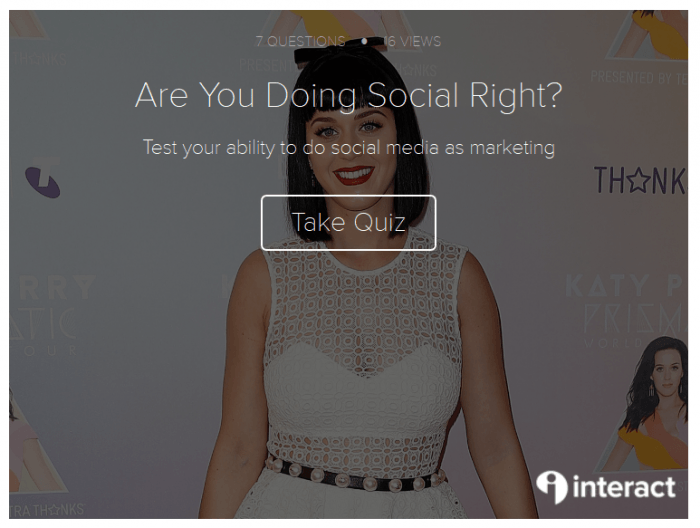Editor’s note: While this post was written for the marketing agency pro, most of its recommendations are good for any time-strapped marketer.
 As an agency-side marketer, chances are that you spend far more time whipping up assets and planning campaigns for your clients than you do creating anything for your own company.
As an agency-side marketer, chances are that you spend far more time whipping up assets and planning campaigns for your clients than you do creating anything for your own company.
But you, of all people, know how important it is to get (and keep) good prospects in the pipeline. We’ve collected a few ways you can leverage a channel or a technology to boost your own marketing efforts without taking too much time away from your clients.
Socialize strategically
Social can be a black hole, so you need to be very selective. Pick out the two or three social channels that will give you circulation and presence with your current and potential clients. Don’t get distracted by the shiniest new thing – unless your clients and potential clients are there in strength. You’re far better off doing a thorough job in two channels than having a thin presence in five.
LinkedIn. VentureBeat recently identified LinkedIn as the best place for lead intelligence. It’s a good place for agencies; there are plenty of groups and forums with very targeted interests, which are frequented by both professionals and ordinary buyers looking for solutions. You can probably find at least one group that’s aligned with your agency’s strengths, which means your proven expertise could make you a respected contributor. Commenting on others’ posts on LinkedIn can offer good exposure with a long shelf life, and is less work than starting your own threads. Respond substantively and thoughtfully to the topic or issue; don’t sell yourself or your agency, and don’t offer links. You’re looking to demonstrate credibility, which will organically drive respect and interest over time. If you’re there, people can (and will) find you when they decide it’s time to turn to you for help solving a problem.
 Celebrate your clients’ wins, even if their victories aren’t connected to one of your campaigns. If and when it’s appropriate, take out your phone, snap a picture, and post in social media with a shout-out to your client. It’s quick, it’s easy, and if your client is active in social media, they will appreciate it.
Celebrate your clients’ wins, even if their victories aren’t connected to one of your campaigns. If and when it’s appropriate, take out your phone, snap a picture, and post in social media with a shout-out to your client. It’s quick, it’s easy, and if your client is active in social media, they will appreciate it.
Use content marketing
Create it. You’re going to require fresh content from time to time; you need it for your own marketing, and you need it to set an example for your clients as well as keeping your own growth going. Look for tools that make it easy, such as Infogr.am or Piktochart to create infographics that are easy to share.
 Look for assets that scale: that you can create once and use in multiple formats, or that scale as inbound marketing assets that work for you 24/7. Try making a fun quiz and post it on your website; these have a long lifespan and are quite shareable. There are companies that make it very easy, quick, and affordable with templates.
Look for assets that scale: that you can create once and use in multiple formats, or that scale as inbound marketing assets that work for you 24/7. Try making a fun quiz and post it on your website; these have a long lifespan and are quite shareable. There are companies that make it very easy, quick, and affordable with templates.
Consider recording a short webinar that offers your specialized expertise on topics your clients care about. Offer this webinar on-demand on your website, and socialize the offer to gain a little traffic. Bite-size webinars don’t take a lot of time to create, and prospects find them digestible. Turn the slides into an infographic, and/or a blog post.
Don’t write or research anything unless you can use your efforts in at least three ways (e.g. in a paper, a blog post, and a proposal).
Curate it. Collect snippets of excellent pieces of information (stats, graphics, quotes, tips, best practices, survey results) from credible and vendor-agnostic sources, then add your own insightful commentary. Don’t publish an entire article (that would be duplicate content, an SEO worst practice) but use a representative bit of the information, acknowledge the original source, and link to it. (By the way, if you find a curate-able bit of content on an aggregation site, look for the link to the original source material and then link to the original; don’t link to the aggregator.)
You can make your curated piece a blog post or infographic, and also put it into a PowerPoint which you can turn into a PowerPoint movie file. Post it on your website, send it out in an email campaign, and post it on SlideShare. This will connect your agency to relevant content and position you as a source for credible, useful information. SlideShare, by the way, is among the top 120 most-visited websites in the world and is a popular site for searchers, so your efforts here (creation or curation) can pay off handsomely.
Save time through automation; even small campaigns can yield big results
The beauty of marketing automation is that it can let you get more done, with less effort, while also increasing your consistency and reducing errors. You can create a few basic automated campaigns for your agency that will manage ongoing interactions with your potential prospects…while you are spending your actual time paying attention to your clients.
An automated process requires time at the beginning to set up, but a simple program may take only an hour or two (especially if it’s not your first). The payoff can be huge. An automated process becomes a little “machine” that helps you build your own business while you’re focused on helping your clients build theirs.
- Trigger campaigns. These deliver an automated response when someone performs an action on your website. Suppose someone downloads a PDF of your agency capabilities; the trigger campaign can send a thank-you and offer a free initial consultation. You’ve just made a personal connection with no effort other than the initial set-up.
- Build one landing page with a form. Offer something of value – a white paper, a free consultation, a video – that people must fill out a form to get. Each new contact you get this way will have some degree of potential as a new client, as they are self-selecting as interested in what you offer. Make sure you have a trigger response.
- Build one simple nurture campaign. Take a hard look at the interactions and (especially) the content that have brought you clients in the past. Create an automated nurture program that replicates those steps in an email campaign. Make it as simple as possible.
For example, suppose your expertise is helping clients with new product launches. You could design a program: “Five Steps to the Perfect Product Launch.” You could set this up so that you have five emails, each with one piece of content: Step One, followed by Step Two (two weeks later), and so on through Step Five, followed by a sixth email offering a free consultation. Every time you get a brand-new contact, you could enter them into the nurture program. Over the course of three months, they would get a nurturing email from you every two weeks, hopefully building their confidence in your market wisdom and capabilities. While you are tending to your current clients, your nurturing program is tending your future ones.
Case study: CoreElement, a marketing agency dedicated to helping manufacturers grow with targeted marketing, used marketing automation to develop and deploy a survey for their industry. By gathering demographic information like company size and industry, while also asking about marketing strategy and activities, CoreElement gained detailed insight into the needs of its prospective clients.
Pay attention to who visits your website
Website visitor tracking is another marketing automaton feature that can help you identify your potential next customer.
- Track your visitors. Everyone’s online, on the hunt for solutions to problems. When they begin to look at what you offer, you’ll want to know who they are; you can usually find out using forms and data directories. You can also see which pages they look at, so you get a head’s up on what they’re interested in and how you might begin a conversation with them. You may also discover patterns that tell you how close they are to making a decision.
- Track companies that visit. Most buying decisions are made by a team. You’ll want to know if multiple people from the same company are examining your website; website visitor tracking can show you this data.
- Real-time alerts. Got a particular prospect you’ve been trying to land for a while? Get an alert when they visit a specific page on your website, so you can respond quickly and appropriately.
Case study: circle S Studio’s experience is proof that this works. After receiving an alert that a targeted prospect downloaded an eBook from the circle S Studio web site, the agency was able to respond quickly, with content specific to the prospect’s interest.
The bottom line
At the end of the day, we all want to grow our businesses. The small agency has the same tasks and responsibilities as the enterprise – but without the same resources. This makes it doubly important for the small agency to make sure every action counts, and every asset is scaled. Leverage what’s available to you, and turn it into more.
Agencies are often so buried with client work that they neglect their own marketing. But with a carefully planned strategy, you can – without a great cost in time – get you in front of your own target audience. You can then become your own best case study as you work to grow your client list.
What’s the most effective marketing tactic you’ve ever tried for your agency?
